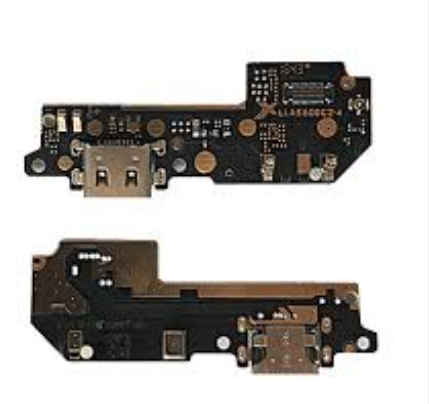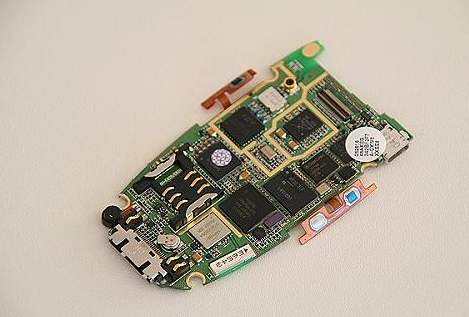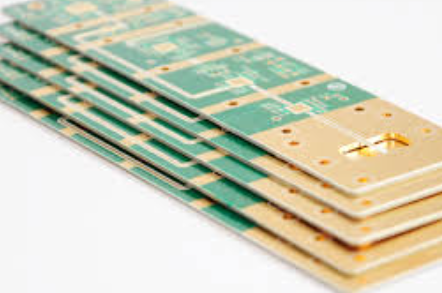Metal core pcb heatpipe
Advantages Of Metal Core PCB Heatpipe In High-Power Applications
In the realm of high-power applications, the integration of metal core printed circuit boards (MCPCBs) with heatpipes has emerged as a significant advancement, offering a multitude of advantages that address the critical challenges associated with thermal management. As electronic devices continue to evolve, becoming more powerful and compact, the need for efficient heat dissipation mechanisms has become paramount. The combination of MCPCBs and heatpipes provides a robust solution, ensuring optimal performance and longevity of electronic components.
One of the primary advantages of metal core PCBs is their superior thermal conductivity compared to traditional FR4 boards.
The metal core, typically composed of aluminum or copper, acts as a heat spreader, effectively dissipating heat away from critical components. This characteristic is particularly beneficial in high-power applications where excessive heat generation can lead to thermal runaway, component failure, and reduced operational efficiency. By incorporating a metal core, the PCB can maintain lower operating temperatures, thereby enhancing the reliability and performance of the electronic device.
In addition to the inherent thermal conductivity of metal core PCBs, the integration of heatpipes further amplifies their thermal management capabilities.
Heatpipes are highly efficient thermal conductors that transfer heat through the phase change of a working fluid. When combined with MCPCBs, heatpipes facilitate rapid heat transfer from the heat-generating components to the metal core, which then disperses the heat over a larger surface area. This synergistic effect significantly reduces thermal resistance, ensuring that heat is efficiently managed even in densely packed electronic assemblies.
Moreover, the use of metal core PCBs with heatpipes offers enhanced mechanical stability and durability.
The metal core provides a rigid and robust structure, which is less prone to warping and mechanical stress compared to conventional PCBs. This attribute is particularly advantageous in high-power applications where the electronic assemblies are subjected to harsh operating conditions, such as high temperatures, vibrations, and mechanical shocks. The combination of mechanical strength and efficient thermal management ensures that the electronic device can withstand demanding environments without compromising performance.
Another notable advantage is the potential for miniaturization and design flexibility.
As electronic devices become more compact, the need for efficient space utilization becomes critical. Metal core PCBs with integrated heatpipes allow for more compact designs by effectively managing heat within a smaller footprint. This capability enables designers to create high-power electronic assemblies with reduced size and weight, which is particularly beneficial in applications such as aerospace, automotive, and portable electronics.
Furthermore, the improved thermal management provided by metal core PCBs with heatpipes can lead to increased energy efficiency.
By maintaining lower operating temperatures, electronic components can operate closer to their optimal performance levels, reducing energy losses associated with thermal inefficiencies. This aspect is particularly important in high-power applications where energy efficiency is a key consideration, such as in power electronics, LED lighting, and renewable energy systems.
In conclusion, the integration of metal core PCBs with heatpipes offers a multitude of advantages in high-power applications, addressing critical challenges associated with thermal management, mechanical stability, and design flexibility. The superior thermal conductivity of metal cores, combined with the efficient heat transfer capabilities of heatpipes, ensures optimal performance and longevity of electronic components. As electronic devices continue to advance, the adoption of this innovative solution is poised to play a pivotal role in enhancing the reliability, efficiency, and miniaturization of high-power electronic assemblies.

Design Considerations For Metal Core PCB Heatpipe Integration
When integrating metal core printed circuit boards (MCPCBs) with heatpipes, several design considerations must be meticulously evaluated to ensure optimal performance and reliability. The primary objective of this integration is to enhance thermal management, which is crucial for high-power electronic applications. Therefore, understanding the thermal properties and mechanical constraints of both MCPCBs and heatpipes is essential.
To begin with, the selection of materials for the metal core is a critical factor.
Typically, aluminum and copper are preferred due to their excellent thermal conductivity. Aluminum is lightweight and cost-effective, making it suitable for applications where weight is a concern. Conversely, copper offers superior thermal performance but at a higher cost and weight. The choice between these materials should be guided by the specific thermal requirements and budget constraints of the project.
In addition to material selection, the thickness of the metal core must be carefully considered.
A thicker core can dissipate more heat but may also introduce mechanical stress and increase the overall weight of the PCB. Therefore, a balance must be struck between thermal performance and mechanical stability. It is also important to consider the coefficient of thermal expansion (CTE) of the metal core material, as a mismatch with the CTE of other PCB materials can lead to warping or delamination under thermal cycling conditions.
The integration of heatpipes into the MCPCB design further enhances thermal management by providing an efficient means of heat transfer from high-power components to heat sinks or other cooling mechanisms. Heatpipes leverage the phase change of a working fluid to transfer heat with minimal temperature gradient. When designing the layout, the placement of heatpipes should be strategically planned to ensure direct contact with heat-generating components. This direct contact maximizes the efficiency of heat transfer and minimizes thermal resistance.
Moreover, the interface between the heatpipe and the metal core must be optimized to ensure effective thermal coupling.
This can be achieved through the use of thermal interface materials (TIMs) such as thermal grease, pads, or adhesives. These materials fill microscopic air gaps and enhance thermal conductivity at the interface. The choice of TIM should be based on its thermal conductivity, ease of application, and long-term reliability.
Another important consideration is the mechanical integration of heatpipes into the MCPCB assembly.
Heatpipes must be securely attached to prevent movement or detachment during operation, which could compromise thermal performance and potentially damage the PCB. Mechanical fastening methods such as clamps or brackets can be used, but they must be designed to avoid introducing excessive stress on the PCB.
Furthermore, the overall thermal management strategy should include provisions for adequate airflow around the heatpipes and heat sinks.
Proper ventilation ensures that the heat dissipated by the heatpipes is effectively removed from the system, preventing thermal buildup. This may involve designing the enclosure with vents or incorporating active cooling solutions such as fans.
In conclusion, the integration of metal core PCBs with heatpipes requires a comprehensive approach that considers material selection, mechanical design, and thermal management. By carefully addressing these design considerations, engineers can achieve a robust and efficient thermal solution that enhances the performance and reliability of high-power electronic systems. The synergy between MCPCBs and heatpipes offers a powerful tool for managing heat in demanding applications, ensuring that electronic components operate within their optimal temperature range.

Thermal Management Solutions Using Metal Core PCB Heatpipe Technology
In the realm of modern electronics, thermal management has emerged as a critical concern, particularly as devices become more compact and powerful. One innovative solution that has gained traction is the use of Metal Core Printed Circuit Boards (MCPCBs) integrated with heatpipe technology. This combination offers a robust approach to managing heat dissipation, ensuring the longevity and reliability of electronic components.
Metal Core PCBs are distinguished by their construction, which typically involves a metal substrate, often aluminum or copper, that serves as the base layer.
This metal core provides superior thermal conductivity compared to traditional fiberglass substrates, allowing for more efficient heat transfer away from heat-generating components. The enhanced thermal performance of MCPCBs makes them particularly suitable for high-power applications such as LED lighting, power supplies, and automotive electronics.
However, as electronic devices continue to evolve, the thermal demands placed on MCPCBs have also increased.
This is where the integration of heatpipe technology becomes invaluable. Heatpipes are thermal management devices that leverage the principles of phase change and thermal conductivity to transport heat from one location to another with minimal temperature gradient. They consist of a sealed hollow tube filled with a working fluid, typically water, which evaporates at the heat source and condenses at the cooler end, thereby transferring heat efficiently.
The synergy between MCPCBsand heatpipes lies in their complementary thermal management capabilities.
While the metal core of the PCB provides a broad area for heat dissipation, the heatpipe can rapidly transport heat away from localized hotspots to regions where it can be more effectively dissipated. This dual approach not only enhances the overall thermal performance but also allows for more compact and lightweight designs, as the need for bulky heatsinks is reduced.
Moreover, the integration of heatpipes into MCPCBs can be tailored to specific applications.
For instance, in high-power LED lighting systems, where maintaining a low junction temperature is crucial for both performance and lifespan, the combination of MCPCBs and heatpipes ensures that heat is efficiently managed. This results in brighter, more reliable lighting solutions with extended operational lifespans. Similarly, in automotive electronics, where space constraints and thermal reliability are paramount, this technology provides a means to meet stringent thermal requirements without compromising on design flexibility.
Furthermore, the manufacturing processes for MCPCBs with integrated heatpipes have evolved to become more cost-effective and scalable.
Advances in materials science and precision engineering have enabled the production of these hybrid thermal management solutions at a competitive cost, making them accessible for a wider range of applications. This has opened up new possibilities for industries that require efficient thermal management but were previously constrained by budgetary limitations.
In conclusion, the integration of Metal Core PCBs with heatpipe technology represents a significant advancement in thermal management solutions. By leveraging the inherent thermal conductivity of metal cores and the efficient heat transfer capabilities of heatpipes, this approach addresses the growing thermal challenges in modern electronics. As devices continue to shrink in size while increasing in power, the need for effective thermal management will only intensify. The MCPCB heatpipe technology stands poised to meet these demands, ensuring that electronic components operate within safe temperature ranges, thereby enhancing their performance, reliability, and lifespan.

Comparing Metal Core PCB Heatpipe To Traditional Cooling Methods
In the realm of electronic device manufacturing, efficient thermal management is paramount to ensure optimal performance and longevity of components. Among the various cooling methods available, the metal core printed circuit board (MCPCB) heatpipe has emerged as a noteworthy innovation. To appreciate its advantages, it is essential to compare it with traditional cooling methods, such as air cooling and liquid cooling, which have been the mainstays in the industry for decades.
Traditional air cooling methods typically involve the use of fans and heat sinks to dissipate heat generated by electronic components.
While this approach is relatively simple and cost-effective, it has inherent limitations. Air cooling relies on the movement of air to transfer heat away from the components, which can be inefficient in high-density electronic assemblies. Moreover, the effectiveness of air cooling diminishes as the power density of electronic devices increases, leading to potential overheating and reduced reliability.
In contrast, liquid cooling systems offer a more efficient means of heat dissipation by using a liquid coolant to absorb and transfer heat away from the components.
This method can handle higher thermal loads compared to air cooling and is often employed in high-performance computing systems and data centers. However, liquid cooling systems are more complex and expensive to implement. They require pumps, reservoirs, and tubing, which add to the overall system weight and maintenance requirements. Additionally, the risk of leaks poses a significant concern, potentially leading to catastrophic failures.
Enter the metal core PCB heatpipe, a hybrid solution that combines the benefits of both air and liquid cooling while mitigating their respective drawbacks.
MCPCBs are designed with a metal core, typically aluminum or copper, which provides superior thermal conductivity compared to traditional fiberglass PCBs. This metal core acts as a heat spreader, efficiently distributing heat across the board and reducing hotspots. The integration of heatpipes further enhances thermal management by facilitating rapid heat transfer from the heat-generating components to the metal core.
Heatpipes are sealed tubes filled with a working fluid that undergoes phase changes to transfer heat.
When heat is applied to one end of the heatpipe, the working fluid evaporates and moves to the cooler end, where it condenses and releases the absorbed heat. This cyclical process allows for highly efficient thermal transfer with minimal temperature gradients. By incorporating heatpipes into MCPCBs, manufacturers can achieve superior thermal performance without the complexity and maintenance issues associated with liquid cooling systems.
Moreover, the metal core PCB heatpipe solution offers several additional advantages.
It is inherently more reliable due to the absence of moving parts and the reduced risk of leaks. The compact and lightweight design makes it suitable for a wide range of applications, from consumer electronics to industrial equipment. Furthermore, the improved thermal management capabilities can lead to enhanced performance and extended lifespan of electronic components, ultimately resulting in cost savings for manufacturers and end-users alike.
In conclusion, while traditional air and liquid cooling methods have their respective merits, the metal core PCB heatpipe represents a significant advancement in thermal management technology. By combining the high thermal conductivity of metal cores with the efficient heat transfer properties of heatpipes, this innovative solution addresses the limitations of conventional cooling methods. As electronic devices continue to evolve and demand higher power densities, the adoption of metal core PCB heatpipes is poised to become increasingly prevalent, offering a reliable and efficient means of maintaining optimal operating temperatures.





